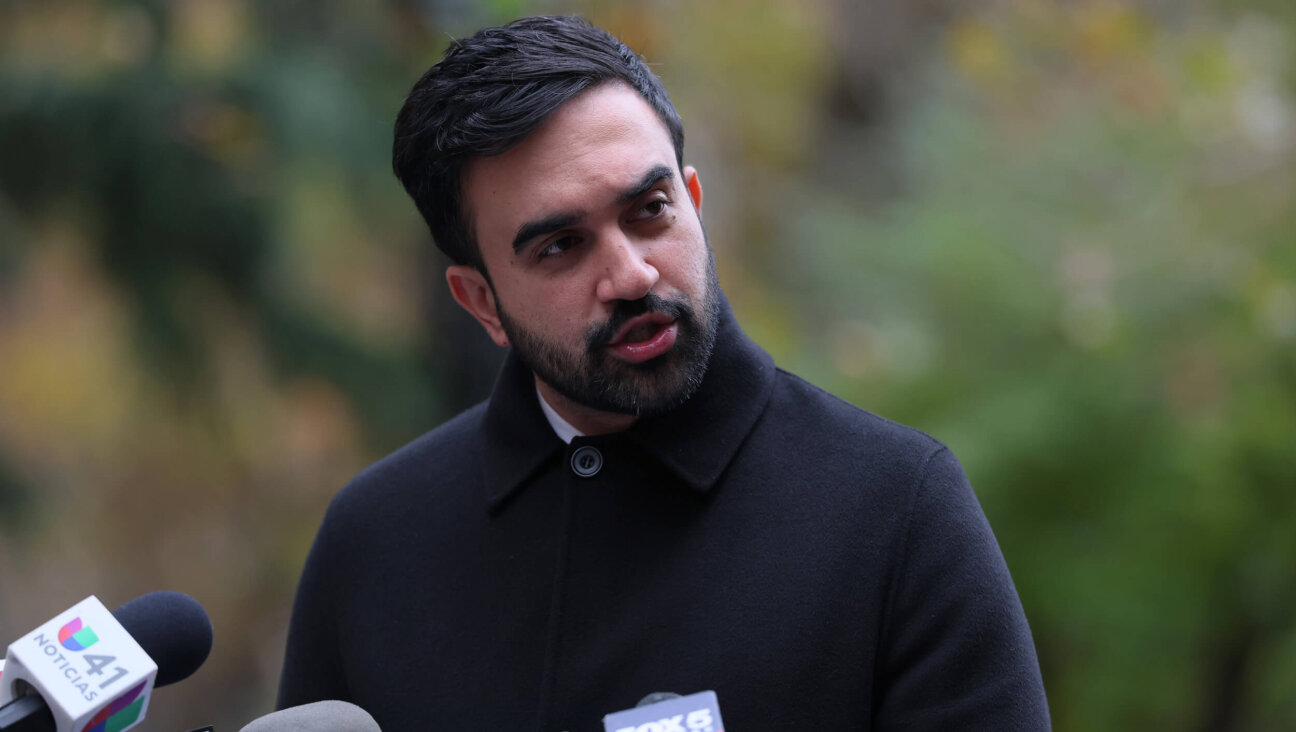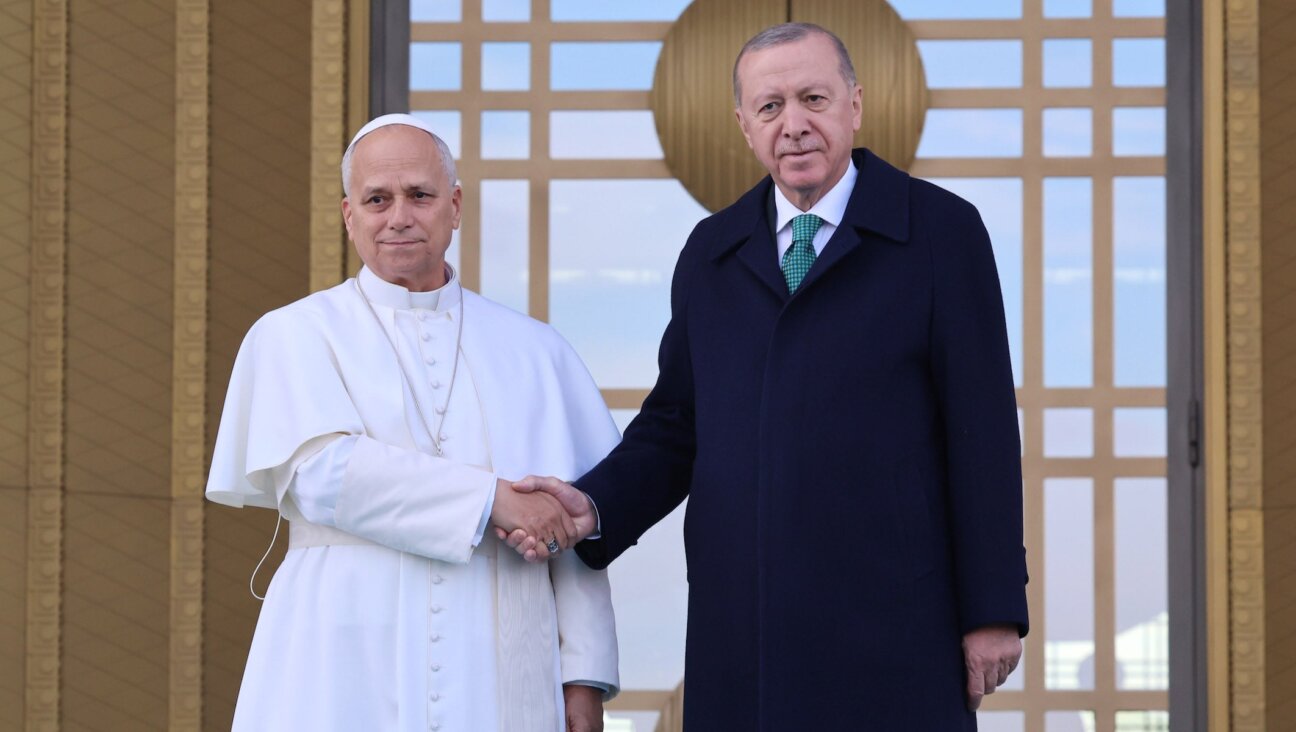Demographics Drive Likud’s Shifting Agenda
WASHINGTON — Driving the Likud’s metamorphosis from “Greater Israel” dogmatism to separation pragmatism are not constraints of geography but of demography.
“Above all hovers the cloud of demographics,” Deputy Prime Minister Ehud Olmert told Israeli columnist Nahum Barnea of Yediot Aharonot last week, explaining his dramatic decision to come out in favor of unilateral Israeli withdrawal from most of the territories. “It will come down on us not in the end of days, but in just another few years,” Olmert said, explaining that if Israel does not disengage from the West Bank and Gaza, the growth rate of Arabs in the territories and inside Israel — which is much higher than that of Jews — will sooner rather than later force Israel to choose between being a Jewish state and being a democratic one.
Olmert, the most outspoken of Likud’s leaders on the need for separation, said: “We are approaching a point where more and more Palestinians will say: ‘There is no place for two states between the Jordan and the sea. All we want is the right to vote.’ The day they get it, we will lose everything.” He added: “I shudder to think that liberal Jewish organizations that shouldered the burden of the struggle against apartheid in South Africa will lead the struggle against us.”
The demographic forecasts that Olmert alluded to are not new. Israeli demographers have been warning for years that by 2020, Jews will no longer be a majority of the population living in the region between the Jordan River and the Mediterranean Sea, which includes the state of Israel proper as well as the disputed West Bank and Gaza. Israel’s political left has been using these forecasts to advocate speeding up the peace process to bring an Israeli withdrawal from the West Bank and Gaza.
But only recently have demographics come to fully reverberate in Israel’s political echo-chamber and begun pushing the political agenda of the ruling party. With the official peace process stuck and alternative peace plans sprouting like weeds, Sharon’s center-right government has been under pressure to make some political move.
The forecasts, comprehensively detailed in the leading article of the American Jewish Committee’s freshly published 2003 American Jewish Year Book, are unambiguous, and they present a strong case for a two-state solution, writes the article’s author, Sergio DellaPergola, head of Hebrew University’s Division of Jewish Demography and Statistics. DellaPergola argues that the demographic balance in Israel and the territories will swing in 16 years, by 2020. Right now about 9.3 million people live in Israel, the West Bank and Gaza. Of them, some 3 million are Palestinians residing in Gaza and the West Bank and some 6.3 million live in Israel, including more than a million Arab citizens. The total population in the area is about 55% Jewish and 45% Arab.
According to the medium projection laid out by DellaPergola, which assumes a significant drop in Arab natural growth, the total population of Israel and the territories by 2020 will be about 14.35 million. That will include 8.67 million in Israel — 6.7 million of whom will be Jews — and 5.68 million in the territories. Jews will thus comprise between 44% and 47% of the total population. In 2050, Jews are expected to comprise between 35% and 37% of the population in the area.
The projections are based on the wide gap between the fertility rates of Jews and Arabs, and they assume a probable drop in Arab fertility rates due to modernity. Currently, among Israeli Jewish women, the rate is 2.7 children for each woman of childbearing age. Among Israel’s 1.1 million Arab citizens the rate is about 4.7. In the Gaza Strip it is 6.5, and in the West Bank the rate is 5 children per woman.
The Likud has long since abandoned its aim of fully annexing the West Bank. Some party leaders still support granting no more than limited autonomy to the Palestinians in limited areas of the West Bank. Others say Israel should first focus on defeating terrorism, and only then enter open-ended negotiations. Unilateral disengagement is a third, fairly recent option adopted by Sharon and Olmert, along with a handful of other top leaders in the party.
“Clearly, this camp in Likud is emerging as a result of their recognition of the power of demography,” the former director of Israel’s National Security Council, reserve General Uzi Dayan, told the Forward last week. “You can’t argue with the numbers.” Dayan, who is considered close to the Labor Party, advocated the unilateral disengagement option to both prime ministers Ehud Barak of Labor and Sharon of Likud while serving as their national security adviser. Contrary to what is assumed to be Sharon’s and Olmert’s view, Dayan does not see such a move as an endgame but as a step to induce negotiations toward a final-status agreement with the Palestinians.
The legitimacy that Likud’s most senior leaders have given to the “demographic argument” — as it is known in Israel — is fueling the debate over the advisability of Israel’s continued presence in the West Bank and Gaza and putting the territories’ Jewish settlers on the defensive.
Last week, at the conference in Herzliya that served as the podium for Sharon’s historic “unilateral disengagement” speech, Justice Minister Yosef Lapid of the secularist Shinui party said that Jewish settlers “in their heart of hearts dream of transfer.” Lapid called such an option “not only barbaric but also utterly impossible.” He accused them of exerting control over Israel’s political arena that far exceeds their minority status. “Even though Israel is an exemplary democracy, it is de facto controlled by a small minority of Yesha settlers who represent a minority within the settlers themselves.”
This week, a group of officers and soldiers from Israel’s top commando unit, Sayeret Matkal, sent a letter to Sharon explaining — on moral grounds — their refusal to serve in the territories. This week a group of bereaved families of victims of Palestinian violence launched a massive letter writing campaign to settlers in the Gaza Strip, urging them to leave.
Not all of Likud’s leaders are embracing the demographic argument for disengagement. Finance Minister Benjamin Netanyahu, who is positioning himself to challenge Sharon from the right, said in his policy speech at the Herzliya conference that West Bank and Gaza Palestinians are not the true demographic challenge, “since nobody is suggesting we continue to control them, and they will have some form of self-rule.” Netanyahu drew fire from civil libertarians and opposition leaders by declaring that the real “demographic problem” was in fact the Arab minority within Israel proper. “If Israel’s Arabs become well integrated and reach 35% to 45% of the population, there will no longer be a Jewish state,” he said.
Arab citizens are about 19% percent of Israel’s population. They are expected to reach 21% to 23% of the population by 2020. There are no credible projections of any future point at which they would reach 35% or 45%.
A study published last week by the Jerusalem Institute for Israel Research, a private think tank, shows that the city of Jerusalem, always a microcosm of Arab-Jewish coexistence, may be first to experience a demographic balance shift. The study points out that the capital’s Arab population is growing 3.3 times faster than its Jewish population. Although it doesn’t explicitly say so, the study shows that if current trends continue, it may take fewer than 15 years for Arabs to become Jerusalem’s majority. “We may have a situation, in say 12 years, where, heaven forbid, Jerusalem is not the capital of the Jews or the Jewish people, but instead has an Arab majority,” Mayor Uri Lupolianski said.















